Layer Performance: 8 Key Factors for Optimal and Healthy Growth
To achieve the best performance from your layers, it is important to approach their care with attention to detail, starting from the moment they arrive as chicks until they lay their last eggs. Successful commercial egg producers understand that taking control of crucial factors is key to unlocking the full potential of their flock's productivity.
It is essential to monitor and manage important aspects at each stage of development in order to achieve the desired growth curve for your layers, enabling the production of quality eggs. Here are 8 critical factors that determine the success of your egg production to ensure a profitable return on investment for each cycle.
1. Feed & Nutrition
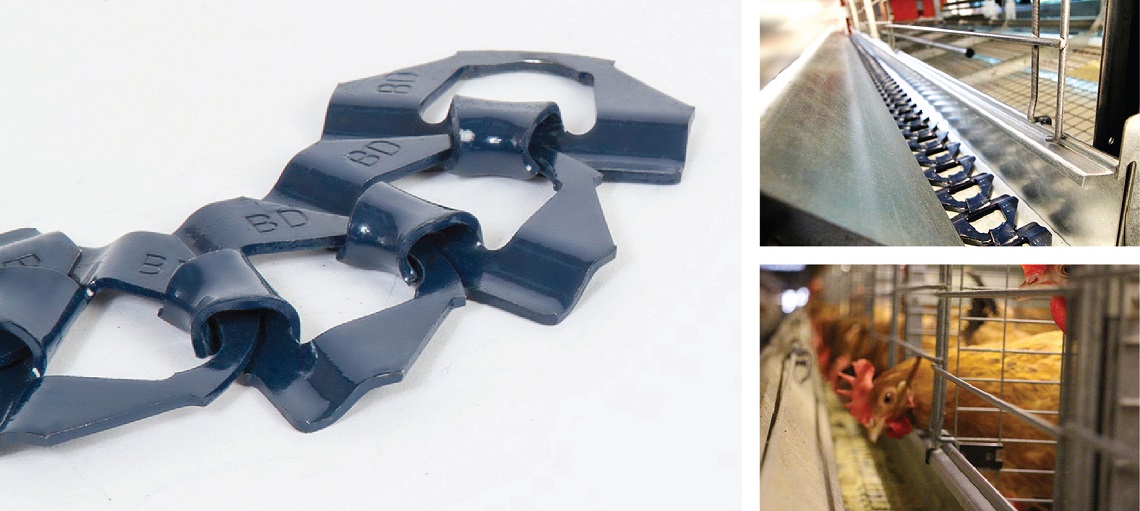 Proper nutrition plays a vital role in the growth and health of egg production, making it the costliest component. It is crucial to create well rounded diets that include the right balance of protein, energy, vitamins and minerals. Additionally, ensuring feed quality, availability and distribution using reliable equipment like Chain Feeding is an important aspect of nutrition. To successfully achieve the desired laying ratio in each production cycle, it is essential to implement a well-managed feeding program that pays special attention to the Feed Conversion Ratio (FCR).
Proper nutrition plays a vital role in the growth and health of egg production, making it the costliest component. It is crucial to create well rounded diets that include the right balance of protein, energy, vitamins and minerals. Additionally, ensuring feed quality, availability and distribution using reliable equipment like Chain Feeding is an important aspect of nutrition. To successfully achieve the desired laying ratio in each production cycle, it is essential to implement a well-managed feeding program that pays special attention to the Feed Conversion Ratio (FCR).
2. Water Quality & Availability
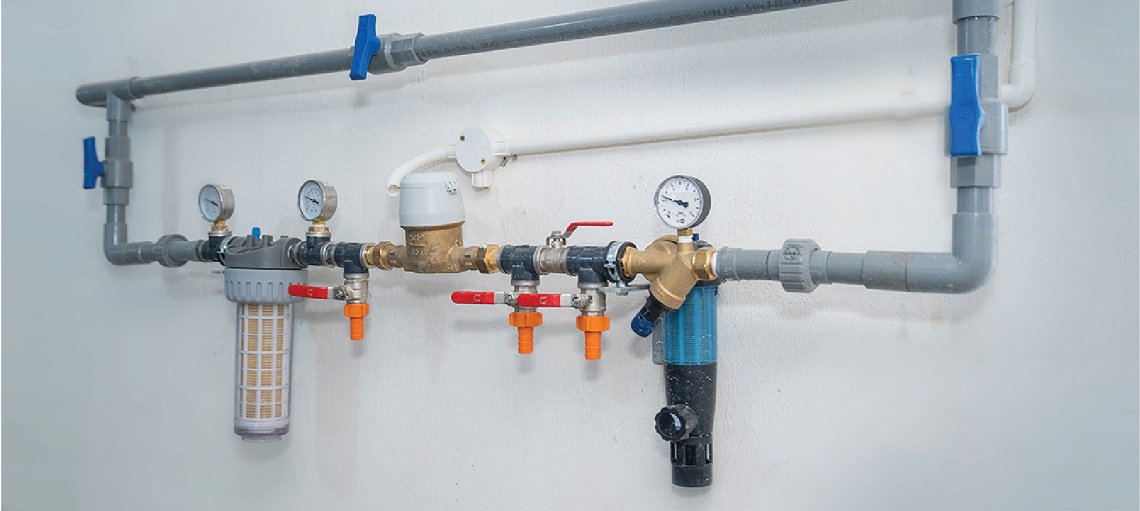
Clean water of high quality is just as important as feed when it comes to promoting digestion, nutrient absorption and maintaining proper hydration levels. Ensuring a sufficient supply of water with convenient and controlled access is vital for the health and performance of your layers.
3. Environmental Conditions
One of the most important non-dietary factors influencing feed conversion is the microclimate and ambiance within the layer house, these include:
- Temperature: Temperature regulation is important for the wellbeing of layers. It's crucial to have proper ventilation and cooling systems in place to prevent heat stress, which can negatively impact their growth and survival. Additionally, maintaining optimal temperatures enable hens to utilise nutrients efficiently for growth and egg production instead of using them to regulate their internal temperature. This also promotes the maintenance of a high level of feed conversion efficiency.
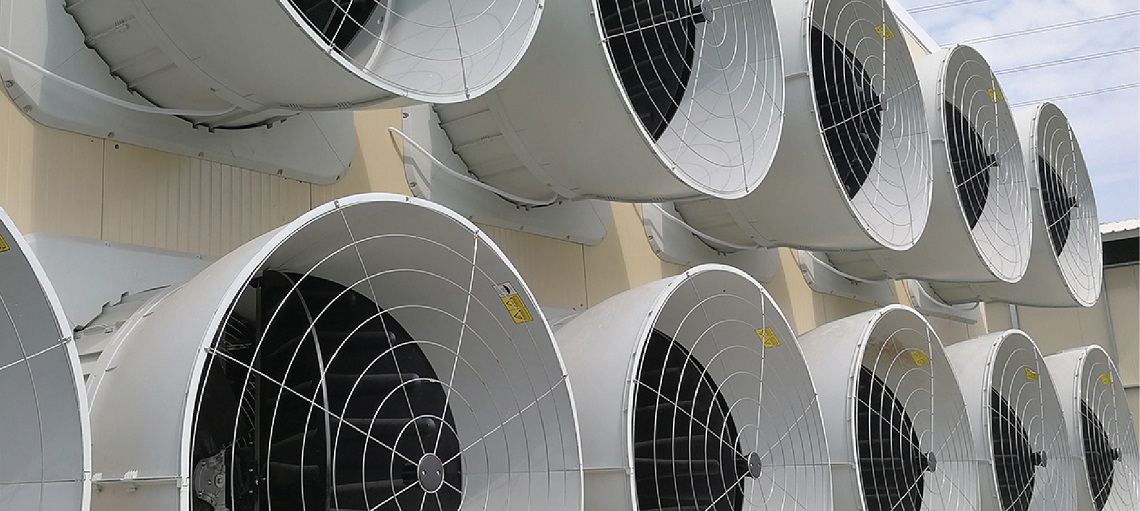
- Humidity: Maintaining optimal humidity levels helps prevent heat stress and reduces the risk of respiratory issues. Uncontrolled humidity also leads to excessive water consumption, resulting in damp litter that can spread diseases.
- Lighting: The duration and intensity of light can impact hens’ behaviour, maturity, feeding patterns and growth. Proper lighting systems and programmes factoring the growth phase of the layers are essential in promoting flock wellbeing.
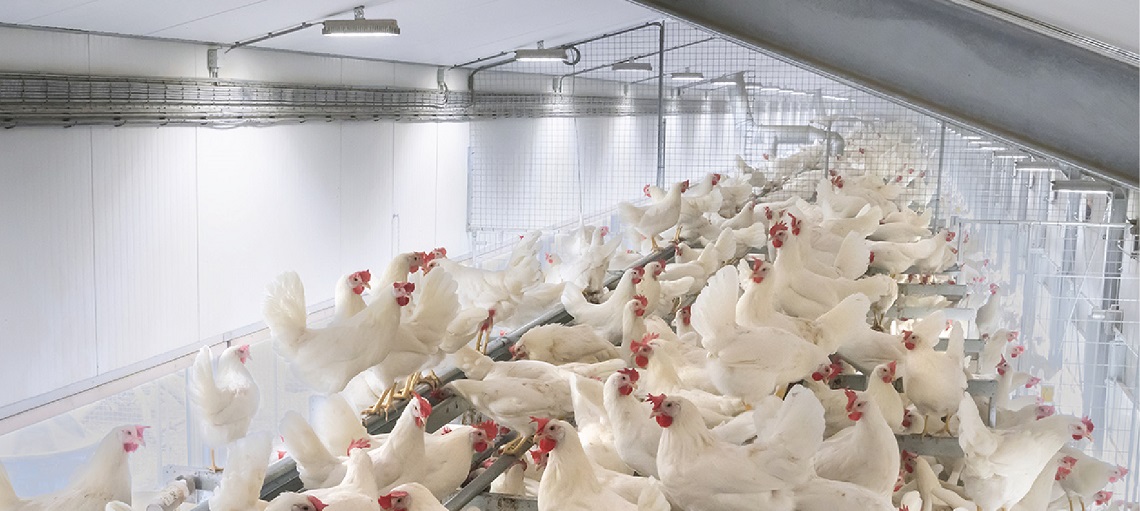
- Air Quality: Good air quality is vital to prevent respiratory problems. Effective ventilation and air circulation are necessary to reduce ammonia levels and excess moisture for a comfortable living environment.
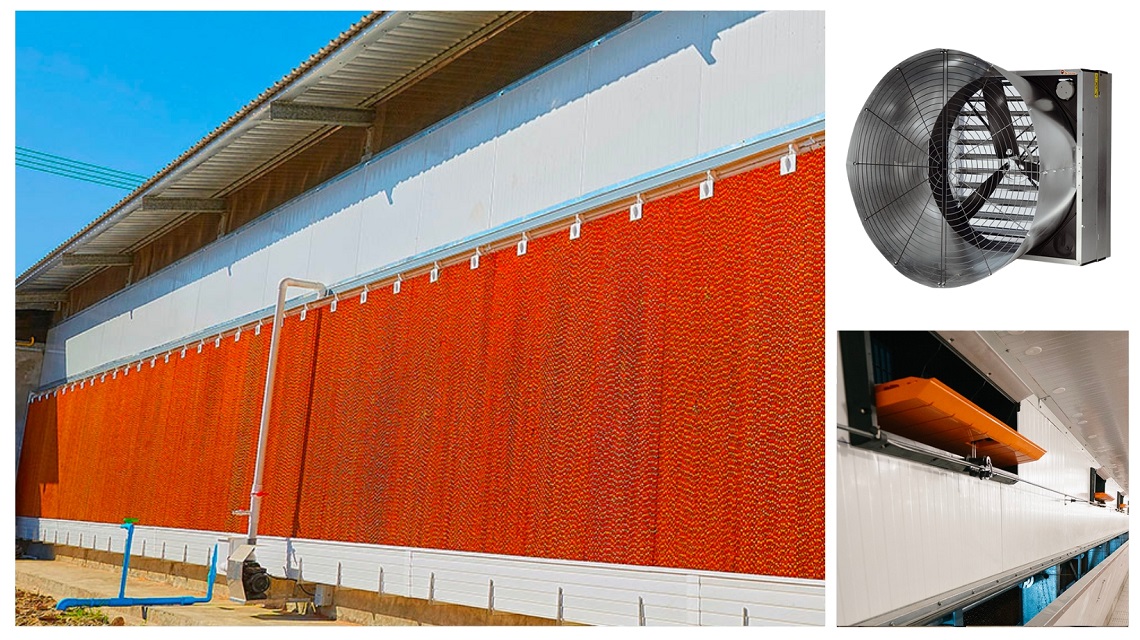 4. Disease Prevention
4. Disease Prevention
Taking measures like vaccination, following strict biosecurity protocols and regularly monitoring the health of our layers is crucial for maintaining their long-term performance. It's also important to keep their feeding, watering and housing areas free from any pathogens.
5. Litter Management
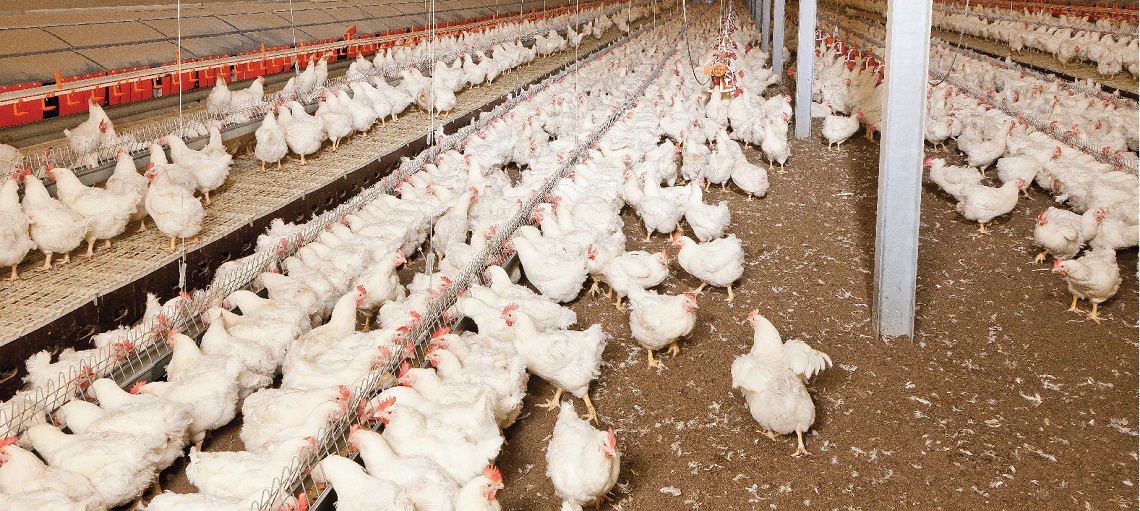
Litter is defined as the combination of bedding materials, excrement, feathers, wasted feed and wasted water. Hence it is significantly important especially in layer breeder production to maintain a clean and dry litter, preventing health conditions such as footpad dermatitis and breast blisters, while minimising ammonia emissions.
6. Stocking Density
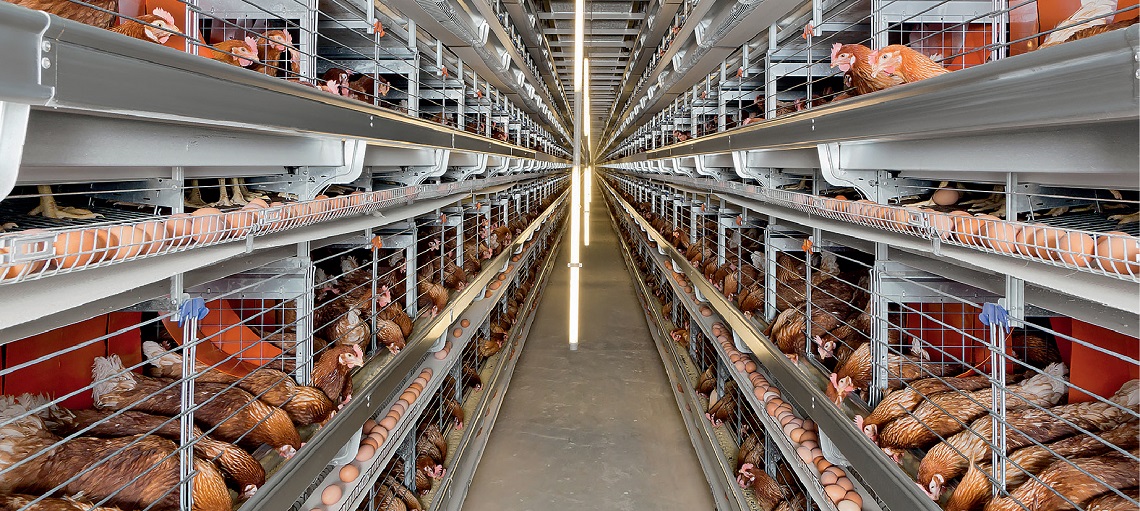
Overcrowding can lead to stress and poor performance. Appropriate stocking density prevents stress, feed competition, and negative flock behaviour. Factors to consider when determining stocking density include bird size, feeder spacing, drinker spacing, house dimensions and bird breed among others.
7. Genetics
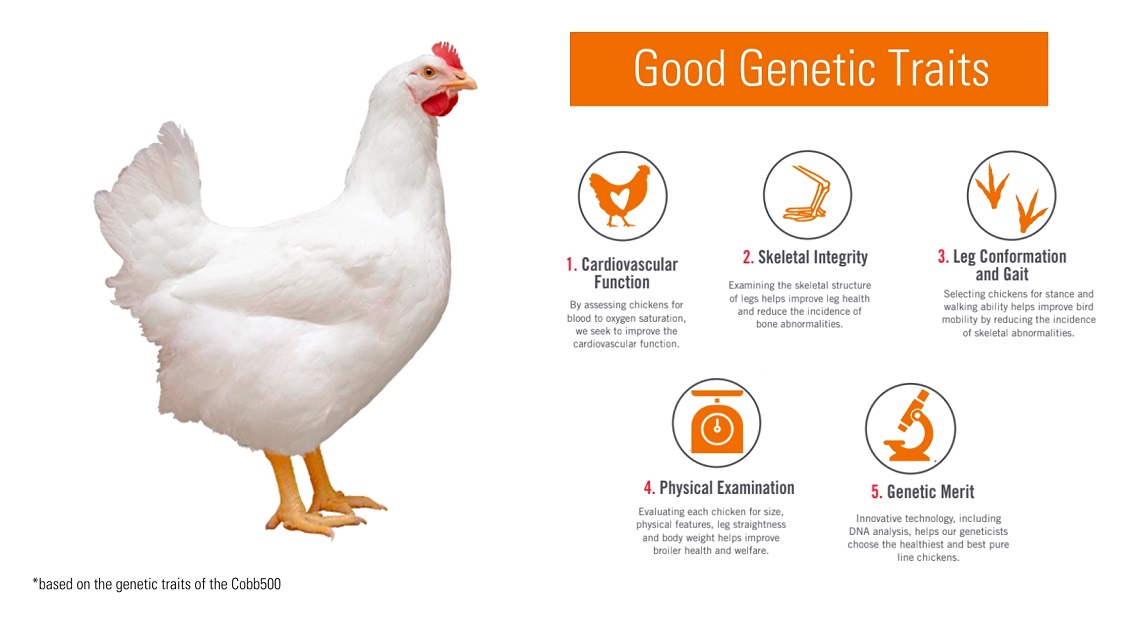
The genetic selection of layer breeds plays a fundamental role in determining growth rates, feed efficiency, and overall performance. Some breeds mature naturally faster compared to others, while each breed will require its own specific management style for optimal laying ratio. Choosing breeds that are well-suited to your production and business goals is essential.
8. Human Element
The employees who work in layer houses also have a crucial role in ensuring the best growth and performance. It is important to maintain high levels of cleanliness and follow biosecurity measures to minimise the chances of cross contamination, which can enhance the overall health of the flock. Additionally, any interaction between humans and the birds, especially when they are young, should be done with care and attention to prevent stress and fear.
The success of egg production relies on how all these elements work together harmoniously. To achieve consistent growth rates, efficient feed utilisation and optimal laying performance in egg production, it is crucial to have a well informed and adaptable approach to managing layers while prioritising their health and welfare.
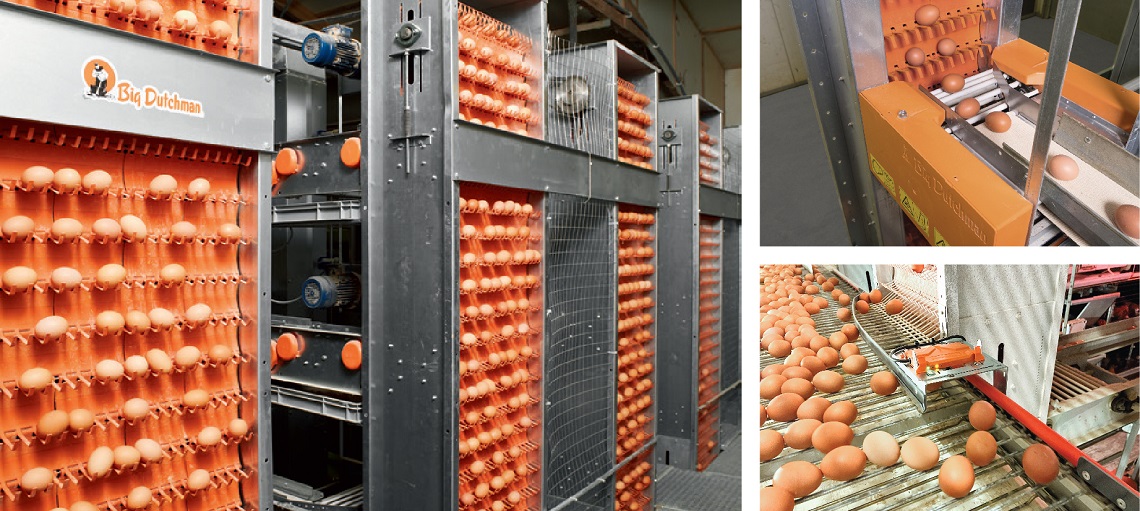
Since 1992, Big Dutchman has been a leading company in Asia, providing advanced equipment and systems for egg production. We have collaborated with numerous egg producers to help them improve and expand their businesses. Our expertise and cutting-edge technology can be seen in many of the state of the art and large-scale egg production facilities throughout the Asia Pacific region, which showcases our commitment to innovation and customer service.
Have you covered all the bases in your egg production farm? Let us help make sure. Click the ‘Send a Message’ Button below to talk to us!

